A Very Popular British Garden Bird – The Wren
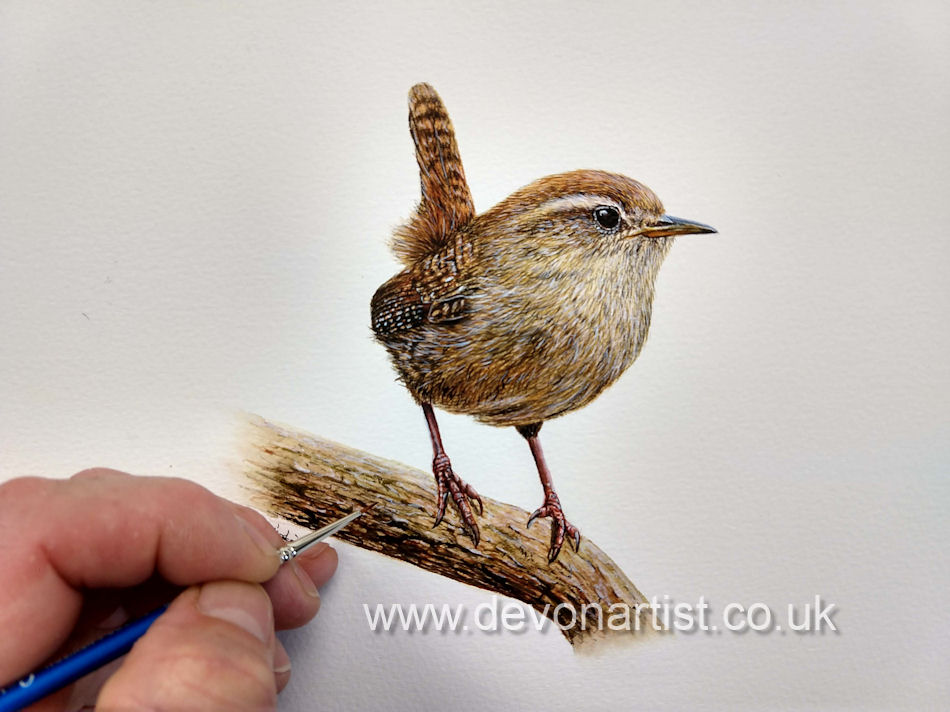
The Eurasian Wren – Troglodytes troglodytes our popular British garden wren. This scientific name bears reference to their tendency to disappear into crevices and cavities in search of food or a suitable roosting spot. The Wren is a firm favourite with everyone. Indeed, I’ve lost count of how many I have painted over the years!
The Wren is not our smallest bird in the UK, that award goes to the Goldcrest and Firecrest. However, it is still a relatively small bird compared to everything else. Measuring just 9 or 10 cm and weighing between 7 and 12g. But, what it lacks in size and weight it makes up for in personality and numbers. There are estimated to be over 8.5 million breeding pairs here in the UK. And, even if you don’t realise it, you will have heard them sing at some point. For such a tiny bird, they have an incredibly loud voice.
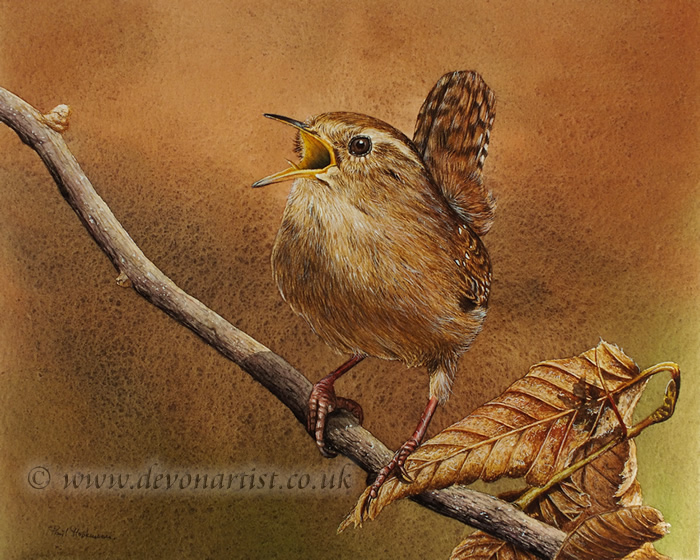
Seeing Wrens
Wrens are resident in our country all year round, you may see one hopping about in the garden or whilst out on a walk. Whilst a small brown bird, they actually have beautiful markings on their plumage. Their body is quite dumpy, with both short wings and a short tail. The latter is often held in a cocked position – one of the wren’s most familiar poses. They eat mainly insects and spiders. Their narrow, relatively long beak is ideal for getting into all those nooks and crannies where a tasty meal may be hiding.
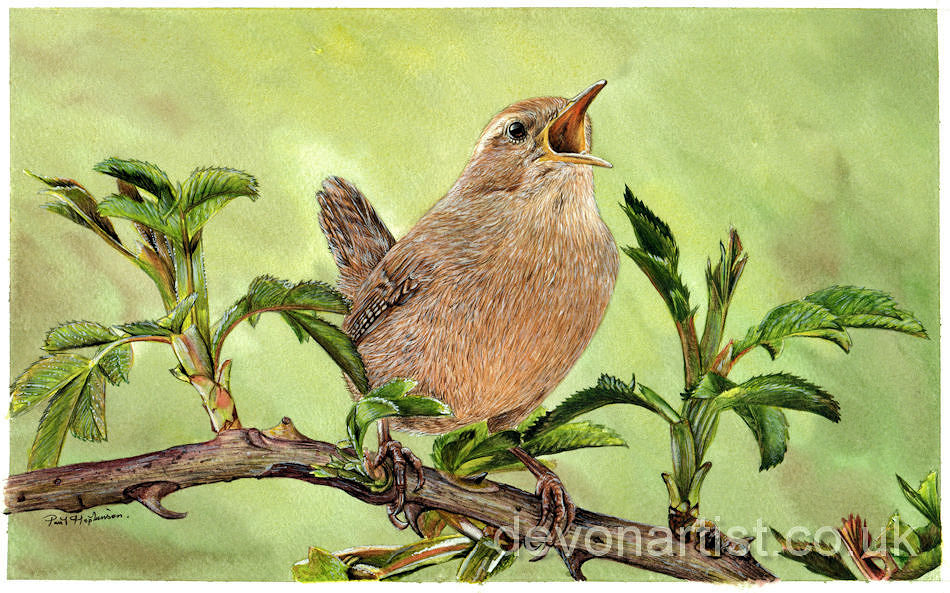
Wrens can be found in a wide variety of habitats, although they are found in low numbers on really high ground. They tend to favour woodlands, gardens, farms, moorland and heathland. Their small body size and limited fat reserves mean they are particularly susceptible to very cold weather. So when the weather turns cold they turn to one another for warmth. Indeed, they will huddle together to roost and see out the worst of the weather. Apparently the record is 61 birds counted in one box in Norfolk in 1969. Just imagine that!
Nest Building
By the spring and the arrival of warmer weather the males are much less tolerant of one another and will strongly defend their territories. They set about building a selection of unlined nests with which they court the female. When the female finds a home that meets her expectations she lines it with soft feathers. She then lays between 5 and 6 small white, finely speckled eggs. Each is just 17 mm in length. The male in the meantime maybe courting additional females!
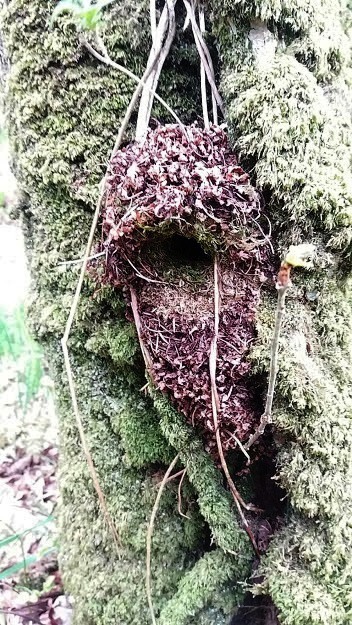
Nests vary in location and in the material they are made from. The nest in the photo is behind an ivy branch and is constructed of bracken. We’ve also seen them made with moss and straw and tucked in a variety of little places. Jo’s Mum even had a nest in her tumble drier outlet pipe…..! The BTO have a further two interesting locations – there is indeed no end to their ingenuity. The young hatch at around 16 days and remain in the nest for 2 – 2.5 weeks. After this time they may return to the nest to roost or may use one of the male’s spare nests instead. They are mainly cared for by the female, although occasionally a male may help with the rearing of the brood.
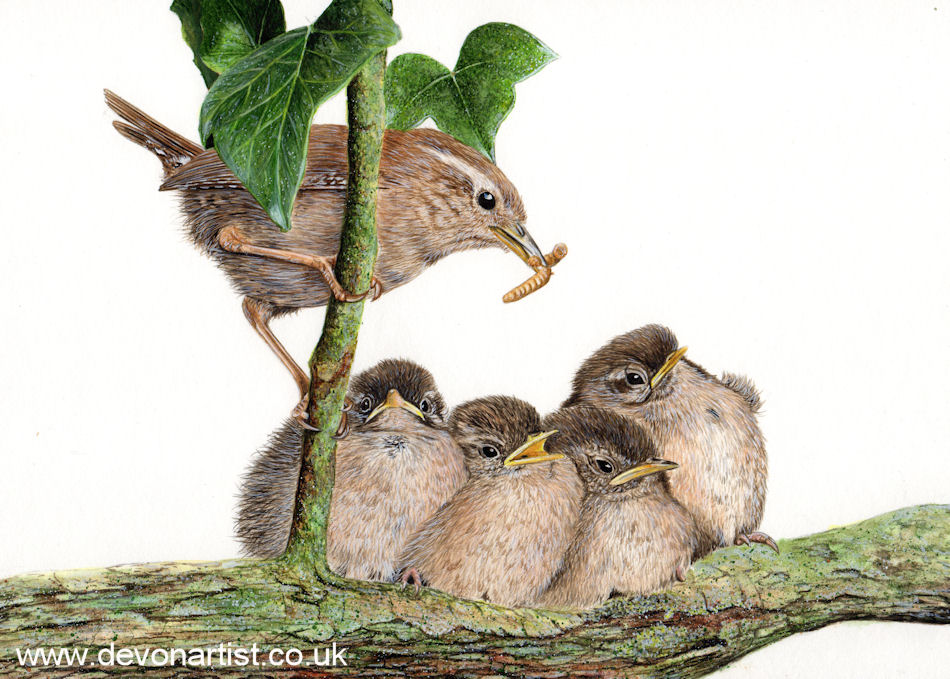
Mother’s Love
The female can be as vocal as the male at times, warning off anything that comes near her nest or young. Many a time we have been walking along our local lanes, and we hear the tut-tutting of a wren. This will be followed by the tiny little high-pitched noise of fledglings in amongst the hedgerow. They move about like little mice and can be difficult to catch sight of. You very often hear them before you see them. There are apparently 88 species of wren. I’ve painted 3 of them! I guess I need to get a wriggle on if I am to paint the other 85!
I hope you have enjoyed this blog as much as I have enjoyed writing about the popular British garden wren. I’ve saved the best to last in the hope that you have read this far. About a week ago we caught movement in one of the cameras in our bird boxes. We looked up and this is what we saw……
We were totally thrilled with this, and it definitely won over the TV for viewing that night. Anyway, must get on, I have 85 other species of wren to get painted……
Until the next time.
Keep them brushes wet. Paul 🙂





6 responses
Fantastic video, thanks for sharing. I love the wren too, of course
Thank you very much for popping along Nina. 🙂
Thank you for the info, and what a lovely video 🙂
You are welcome Andre, it’s been great to watch and hear them in the garden. Paul
It’s so lovely to see others enjoying the gentle wonders of life, makes me miss my home country of England beautiful artwork too !
Thank you Mandy, that’s verey kind of you.